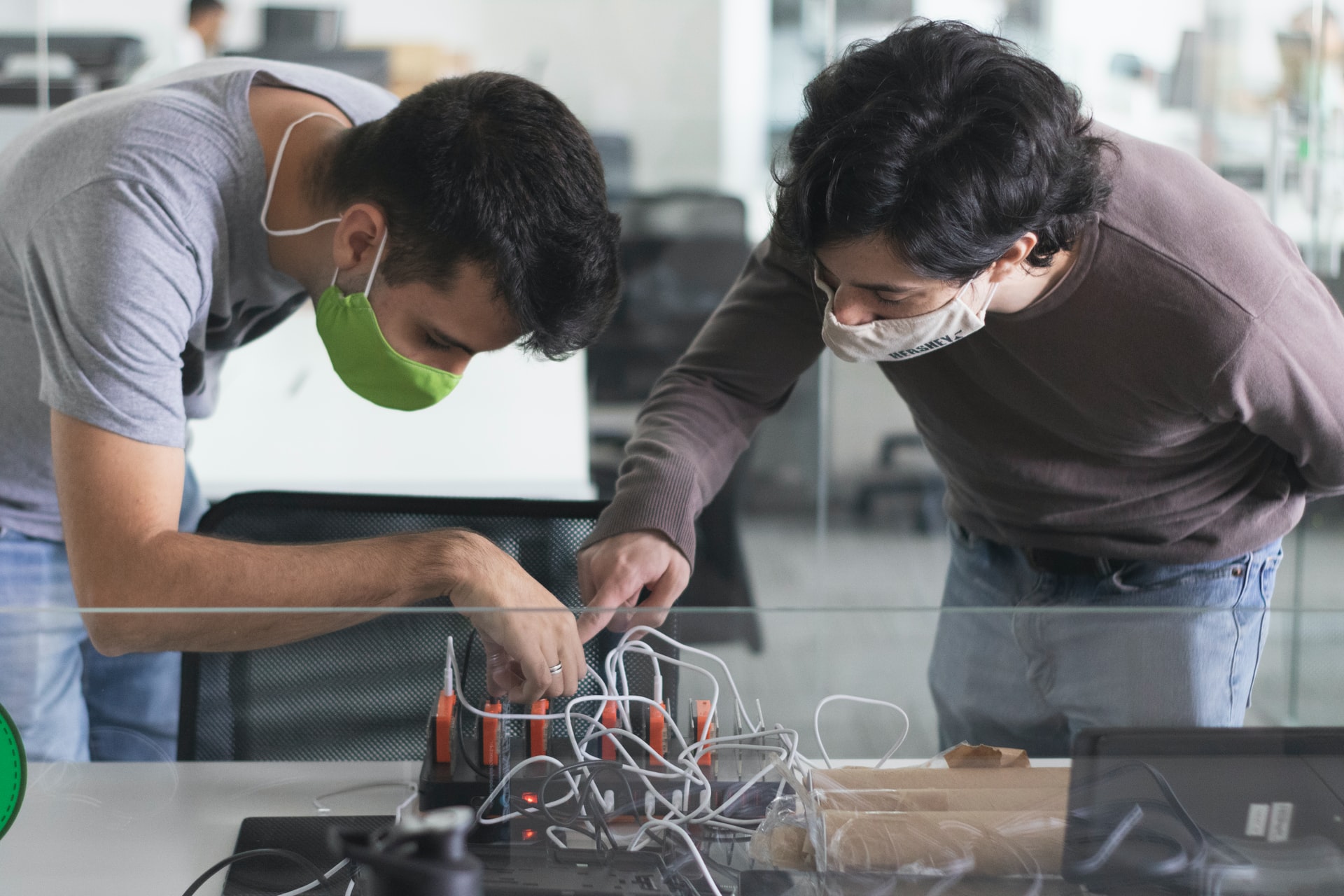
Purposefully designing STEAM programming can make fields such as computing, AI, and space exploration interesting and approachable for youth.
A few months into the 2021-22 school year, teachers, parents, and students are once again confronted with the devastating reality of pandemic-prompted learning loss. The global health crisis forced students out of the physical classroom and into a new virtual world for nearly two grades, and their initial homework and test scores reveal a significant decrease in knowledge transfer, social skills, and core learning habits across a variety of subjects.
Within the first quarter of this school year, gaps in academic proficiencies such as reading, writing, and math have become prevalent. Furthermore, many students are struggling to reacclimate to in-person classes after extended periods of online learning, and attendance rates have dropped as a result. And while high school students dream of a return to normalcy, college prep and career readiness are more fraught with confusion than ever before as the world of higher education and the occupational opportunities available post-graduation have been disrupted by the pandemic.
So how can educators restore the learning systems eroded by COVID-19? And how can they better support students and education communities across the country in their shared mission to empower and inspire the next generation of leaders and innovators with the skills needed to thrive in their future careers? The answer lies in the inclusion of arts in a STEM-centered curriculum.
Science, technology, engineering, and math are broad but dynamic subjects that contain innumerable and specific learning concepts. Arts and sciences have traditionally been perceived as different subjects with few commonalities, and STEM programs often omit the arts from the conversation. But with a STEAM-centered curriculum, students are trained to introduce design, agile thinking, and creative solutions to solve social and scientific problems and bring new inventions to fruition. What’s more, a multi-subject approach to STEAM education promotes deeper conceptual learning and career self-determination and prepares youth for interdisciplinary STEAM careers in a rapidly changing workplace.
A STEAM learning approach encourages collaboration to understand and distill new concepts. By integrating the arts, a STEAM-centered curriculum uses tools such as quantitative visualization or fine arts imagery to deepen one’s understanding of science, math, and technology. This kind of imaginative processing creates a STEAM-oriented critical thinker who will have a better grasp of classroom subjects, apply learnings to test-taking, and even envision new ideas. From kindergarten through third grade, students can use pictures to unpack scientific processes such as photosynthesis or draw charts to learn counting patterns. For upper grades, team projects can revolve around design-thinking and leverage 3D printers to realize multidimensional objects, evolving science projects, and theoretical models.
Statistically, students with an integrated STEAM education have higher English and math test scores, better school attendance, fewer suspensions, and higher graduation rates. Our research confirms that these students also exercise more, are more likely to play on sports teams, are happier with their bodies, and use substances at lower rates. In addition, they have greater confidence in reading and are more interested in career advancement, more engaged in school, and better prepared for life after high school.
This relevance is not arbitrary. COVID-19 and the spotlight on science have highlighted the importance and urgent need for a STEAM-educated workforce. From envisioning accelerated vaccine science to the application of pharmaceutical design, resulting in the implementation of health care strategies, there are countless ways a STEAM-centered curriculum and education can set the stage for humankind’s greatest discoveries.
If educators fully embrace this concept today, they can redirect learning loss and pave the way for tomorrow’s educational advancements. Here are four ways to successfully unlock the benefits of a STEAM-centered curriculum:
Train teachers to integrate art into their math and science lesson plans. There are various certifications for STEAM teaching, yet many teachers believe that simply incorporating tasks such as drawing and coloring into their lesson plans and homework assignments easily transform STEM learning modules into STEAM learning modules. Teachers who are trained to approach curriculum development with an integrated lens can instruct students’ well-rounded learning skills, more directly support various learning needs, and develop a deeper level of engagement with their general student audiences.
Introduce design, drawing, and visual problem-solving in early math and science subjects. Without arts integration, students may feel compelled to separate their proficiencies and only think of topics in isolation. Young students will think of math as math and science as science without a way to tie them together. Through the arts, young learners bridge concepts through infographics, storytelling, and ephemeral projects. A STEAM-centered curriculum bolsters complex problem-solving and enhances their curiosities.
Stabilize and increase funding for art classes in elementary, middle, and high schools by including equipment that integrates a STEAM-centered curriculum in classrooms, such as 3D printers and science labs with visual art materials. The Every Student Succeeds Act provides federal funding for states’ public education budgets to pay for arts programs in public schools. This law protects funding for STEAM education and provides a platform for education budgets to pay for facilities and learning equipment that convert schools into STEAM learning centers through materials and classroom modifications.
Expose students to careers early by planning and taking them on STEAM field trips. This can be tours and hands-on activities at food production units, fabrication plants, design centers, and art museums. Children and students can visualize themselves as learners and career-ready individuals when shown real-world applications of what they learn in the classroom. Access to STEAM professionals can also form mentoring relationships, assist with college navigation, and ultimately open doors to relevant, satisfying, and high-paying positions.
Our society faces both significant challenges and opportunities related to STEAM education, from the global pandemic to climate change, and from vocational and skilled labor shortages to developments in artificial intelligence, health care, space exploration, and green energy.
By developing meaningful and purposefully designed STEAM programming that makes these fields both interesting and approachable for youth, we can chart the course forward and prepare future generations to be resilient future-thinking leaders.
Learn more about STEAM with RobotLAB!

RobotLAB is committed to bringing this technology to the students and enhancing their experience with tools that truly bring learning to life. Check our products ready for career readiness
